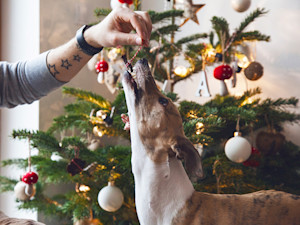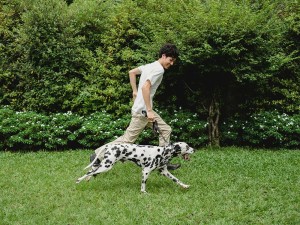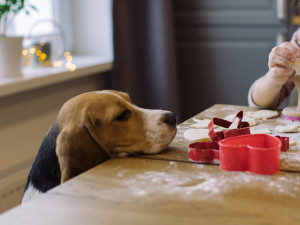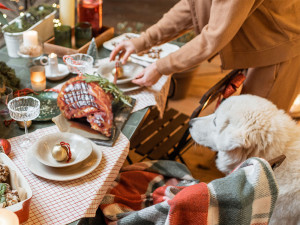5 Ways to Keep Your Dog Happy (and Safe) During the Holidays
Make this time of year a little less stressful for the both of you.
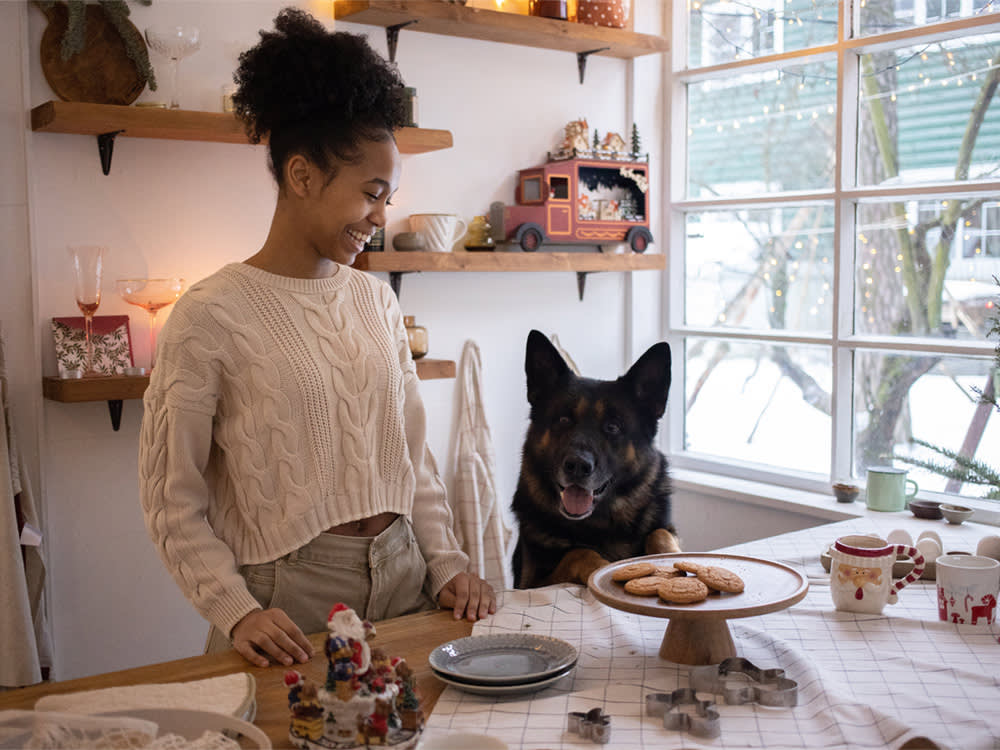
Share Article
The holidays bring surprises — both good and bad — and though there’s no way to predict exactly what will happen, we do know that our lives will be different than usual. That’s a given when we travel, take time off work, or have visitors. It can be hard on dogs when the days have a different flow than they are used to, and the best way to prevent any trouble is to manage the situation to help dogs through these trying times. Here’s how you can keep your dog safe during the holidays.
1. Consider crates, ex-pens, and doors your friends.
Whether you are visiting your favorite dog-loving aunt and uncle over the holidays or hosting 15 family members, have a plan for keeping your dog away from it all temporarily. If a tempting turkey is on the table or six children under the age of four are running amuck at the family gathering, the temporary solution may be the same — let your dog be somewhere else in a safe, enclosed spot.
Crates and ex-pens can be a godsend during chaos, but even a closed door is a gift you can give your dog if trouble is on one side and your dog is on the other. Many dogs need experience to learn to be comfortable when closed off from the main event. Practice ahead of time if you can by giving your dog a Kong stuffed with something incredibly tasty that they can’t resist and putting them in a safe, secluded spot. When you put your dog in that place for real, not just for practice, give them that same delicious treat, so they are happy as well as safely protected from whatever holiday horrors or temptations lurk.
2. Monitor your dog’s emotional state.
Pay attention to how your dog is doing so you know if you must intervene and make any changes. If your dog shows any signs of stress — licking, yawning, sweaty paws, or panting when it’s not hot — try to change the situation that is making them anxious.

Similarly, if they become frightened, do your best to separate them from whatever is scaring them. Fearful dogs may tuck their tails, pin their ears back, lower their body, back away, or have eyes that look big and dark or show a moon-shaped white patch on the side. If your dog looks uncomfortable in any way, be proactive about trying to alleviate the trouble before it gets worse.
3. Don’t live in hope and fear.
It’s horrible to spend your time thinking, I hope it will be OK, but I fear that it will not. Many people experience the misery of this sentiment during the holidays, and I urge you to avoid it at all costs. If you are worried about a situation with your dog, assume that it will not be okay and take steps to prevent it.
That advice applies whether you suspect that your dog will help themselves to the holiday cookies on the table, are worried that they will bolt out the door that people keep leaving open, or you have the awful feeling that your dog will bite your niece if she grabs their ears one more time. Move the cookies, stand guard at the door, or put your dog on a leash, and for heaven’s sake, protect your dog from any children who are harassing them, no matter how sweet everyone else says those kids are.
4. Give your dog a break.
Allowing your dog some time away from it all is a good idea. It can be overwhelming to be around so many new people, especially in unfamiliar surroundings. If you can, take the opportunity to take your dog out for an extra walk or even to spend some time in a room with just you, relaxing and being pet.
Some dogs love some alone time, so providing that break may be as simple as putting your dog in a crate with something to chew on in another room. Other dogs may prefer to have additional one-on-one activities with you. Even dogs who don’t need much downtime at home on a regular day may be grateful for it during the holidays when everything is different.
5. Make informed decisions about whether to bring your dog.
Not every event will be a good match for your dog. If your dog will not have a good time, don’t bring them. It’s a kindness to avoid situations that will not be positive experiences for them. There are so many reasons that holiday events may not be dog-friendly. It may be too noisy with loud music, or perhaps too crowded or too full of young children who will harass or frighten a dog. Maybe your dog won’t be welcome, and it’s not fair to put them in a situation where their presence is not wanted.
Too much food within reach may make some parties a problem for most dogs. Consider what your dog will face at any holiday festivity and choose wisely based on that information whether or not to have your dog participate.

Karen B. London, PhD, CAAB, CPDT-KA
Karen B. London is a certified applied animal behaviorist (CAAB) and certified professional dog trainer (CPDT) who specializes in working with dogs with serious behavioral issues, including aggression. She has written for a variety of magazines including The Bark, Clean Run, and the APDT Chronicle of the Dog, and has published in scientific journals including Behavioral Ecology and Sociobiology, Ethology, Ecology, and Evolution, the Journal of Insect Behavior, and Insectes Sociaux. She is the author of seven books about dog training and canine behavior, including the forthcoming My Dog's Mystery Adventure: And Other Stories From a Canine Behaviorist and Dog Trainer.
Related articles
![Man running with dalmatian dog on a leash in a backyard with grass]()
An Active Dog Is a Well-Behaved Dog
Why regular exercise can mean a less destructive dog and a happier you.
![Shiba inu dog sitting on kitchen counter in a trailer home]()
How Do I Stop My Dog From Counter Surfing?
Celebrity dog trainer Victoria Stilwell’s pro tips for keeping paws off your charcuterie platter this holiday season.
![Dog in the kitchen with girl making cookies from dough on the counter]()
Raw Dough and Dogs Don’t Mix
Active yeast puts dogs at risk for obstruction and alcohol poisoning.
Can Dogs Have Ham?
That might be what you’re having for dinner, but read here to see if your dog can partake.
